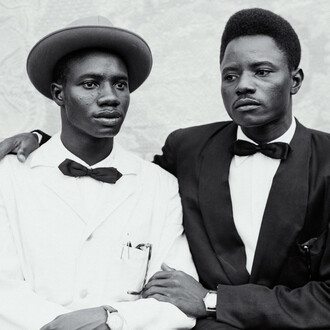For this, our second exhibition of Evelyn Hofer’s photographs, we look at the three distinct genres that Hofer mastered - portraits, landscapes, and still lives. Working exclusively with a 4 x 5 inch viewfinder camera, Hofer took her time to set up her camera composing each picture carefully and creating images that have a timeless aura regardless of the subject.
Over a career spanning more than 40 years, Hofer created a body of work that both looked back to the tradition of August Sander and forward to anticipate the color work of William Eggleston. A photographers’ photographer, Hofer was both respected and influential within photographic circles but considerably less known to the public causing her to be called "the most famous unknown photographer in America" by New York Times art critic Hilton Kramer – a devout supporter of her work.
Almost in counterpoint to much of the on-the-fly work of her contemporaries, Hofer used extraordinary patience to slow the world down, examine its conditions, and capture the exact image that she envisioned, searching for an "inside value, some interior respect" in the people, places, or objects that she photographed. Although frequently commissioned by magazines and publishers to make portraits and land or cityscapes, her goal was to go beyond documentary photography to create a subjective interpretation of the world.
Evelyn Hofer was born in Marburg, Germany in 1922 and died in Mexico City in 2009. When Hofer was eleven her family fled Nazi Germany for Switzerland where she decided she wanted to be a photographer. She began with an apprenticeship with Robert Spreng a noted studio photographer, and took private lessons with Hans Finsler, both pioneers of the "New Objectivity" movement.
Hofer's studies covered everything from photographic technique to art theory. She didn't just learn composition and the underlying theories of aesthetics, she also learned the chemistry involved in producing prints. Beginning in the early 1960s she became one of the first fine art photographers to adopt the use of color film and the complicated dye transfer printing process as a regular practice. Throughout her long career, Hofer continued to shoot in both color and black and white – determining which was the more apt for the picture at hand.
In the middle 1950s Hofer's career took an important turn when the writer Mary McCarthy asked her to provide photographs for “The Stones of Florence”, a literary exploration of the history and culture of that city. Over the next forty years Hofer collaborated with writers including V.S. Pritchett and Jan (James) Morris to produce books on Spain, Dublin, New York City, London, Paris, and Washington, D.C. in which she mixed portraits and cityscapes. For most of her career, Hofer alternated between the genres of portraiture and landscape but in her seventies she turned to still life inspired by the paintings of the 17th century Spanish painter Francisco de Zurburan. In these photographs, the everyday objects portrayed take on an almost spiritual dimension. Depicted with focus and skill they are later life work on many levels.
Hofer died in 2009. When asked for her thoughts on being called "the most famous unknown photographer in America." she said she liked it. She understood that what mattered was the work, not personal fame. Hofer's work has influenced such photographers as Thomas Struth, Joel Sternfeld, Adam Bartos, Rineke Dijkstra, Judith Joy Ross, and Alex Soth. There have been retrospectives of her work at the Musée de l'Elysée in Lausanne (1994); the Aargauer Kunsthaus in Switzerland (2004); the Villa Stuck in Munich (2005);and the Fotomuseum The Hague (2006). The exhibition Evelyn Hofer - Encounters opened last month at the Museum Kurhaus Kleve, and will go to Museum Moderner Kunst Wörlen in Passau and the Fotostiftung Schweiz, Winterthur in Feb. 2020. A major American museum show is currently being organized.
















